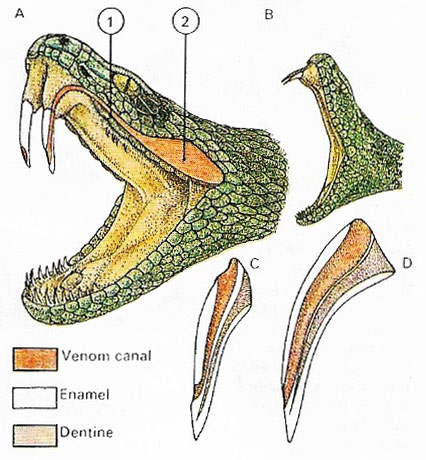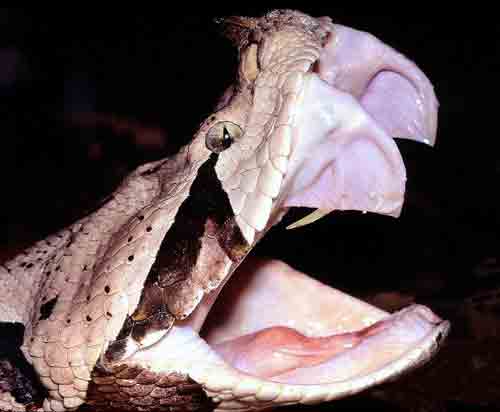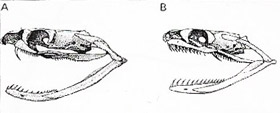snake bite

Figure 1. Snake venom is produced in modified salivary glands, delivered in certain snakes by grooved teeth. In rattlesnakes (A) and their like, venom is squeezed down a duct (1) from the venom gland (2) into a fang like a hypodermic syringe. The fangs are erected and the huge gape (B) becomes apparent as the snake strikes. Three kinds of cobra spray venom at their adversaries' eyes. Their fangs have forward-directed orifices (C), unlike the "hypodermic" fang (D).

Figure 2. A Gaboon viper (Bitis gabonica) showing its fangs, the largest of any snake.
A very small proportion of the world's snakes produce poisonous venom, and most of these live in the tropics. The venom may lead to a hemorrhage, paralysis, and central nervous system disorders as well as local systems of pain, edema, and ulceration. Treatment aims to minimize venom absorption, neutralize venom with antiserum, counteract the specific effects, and support life until venom is illuminated. Venom antiserum, also known as antivenom or antivenin, should be used only for definite bites by identified snakes.
Antivenom is prepared by collecting the venom of snakes and injecting it into animals; horses are often used. The first injections consist of minute doses; as the horse develops immunity against the venom the doses are increased, until it is completely immune. Then a quantity of its blood is taken and all the solid parts of it are removed, leaving only a clear serum. This serum, injected into a vein of a person who has been bitten by a poisonous snake, will neutralise the venom and save their life. To provide venom for the purpose, snakes are kept in snake-farms, and the poison is taken from the living snakes without harming them.
 |
| The fangs of the Indian cobra (A) are at the front of its jaws, and well placed for delivering the venom. Back-fanged snakes such as the boiga (B) generally have smaller fangs. |


